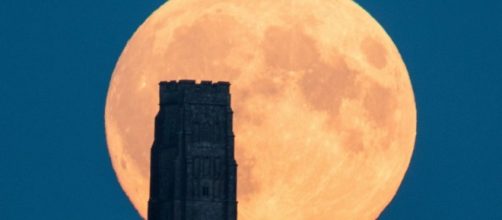So, it's been all over the news the last few days and has left a lot of us scratching our heads wondering what the hell the whole thing is, as well as why everyone's talking about it.
The November 2016 super moon, which can still be seen in various parts of the country that are unhindered by cloudy skies shortly before 5pm tonight GMT, will be the closest the moon has been to earth since January of 1948. That's 69 years, people, so it's a pretty big thing.
The phenomenon
1. The gap between the moon and the earth will narrow to an almost tiny 221,525 miles, which is know as a 'perigree'.
No, I have no idea what it means, either.
2. The moon will appear 14-15% bigger than usual and 30% brighter. Best get those black out blinds at the ready.
3. The moon will not be this close to earth again until November, 2034, so do try not to fall asleep on the couch and miss it.
4. There are actually 3 #supermoons in 2016; the first in October, this one in November, and another in December. However, November's is the closest and brightest, which is why it's stealing the other super moon's thunder. Or, you know...light.
5. Despite what you may have heard, the super moon will not, in fact, tilt the earth off its axel or interfere with you watching the #Strictly results show on catch up. Go right ahead, you will not be robbed of the chance to watch Ed Balls' #Gangnam Style Salsa.
6. There is no real scientific evidence that the super moon will cause people to go insane or me to start hoovering my house. Please, do not panic. It's just a really big moon.
7. The earth is closest to the sun each December (I know it really doesn't feel like that's true, but it is...) and this is why most super moons are in the winter months. This is due to gravity pulling the moon closer to earth.
8. It is estimated that super moons will continue to get smaller every time they appear because the moon is slowly moving itself out of the earth's orbit. So, best to catch it while you can, folks.
9. Actual scientists don't call the super moon a super moon. They call it perigree-syzygy, which is a damn sight harder to spell...

